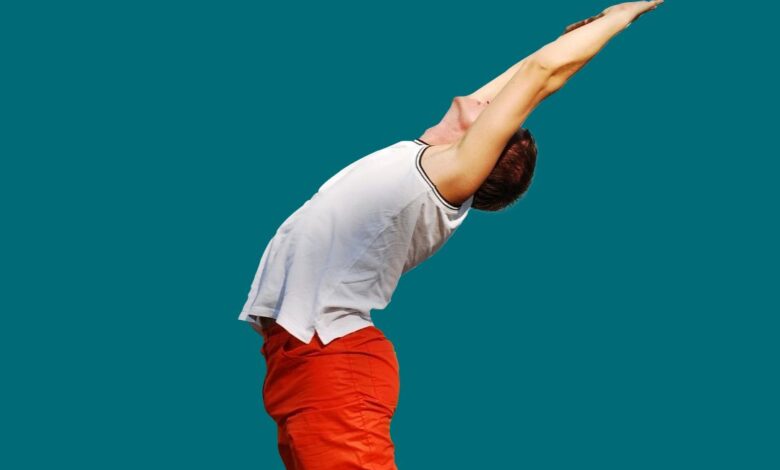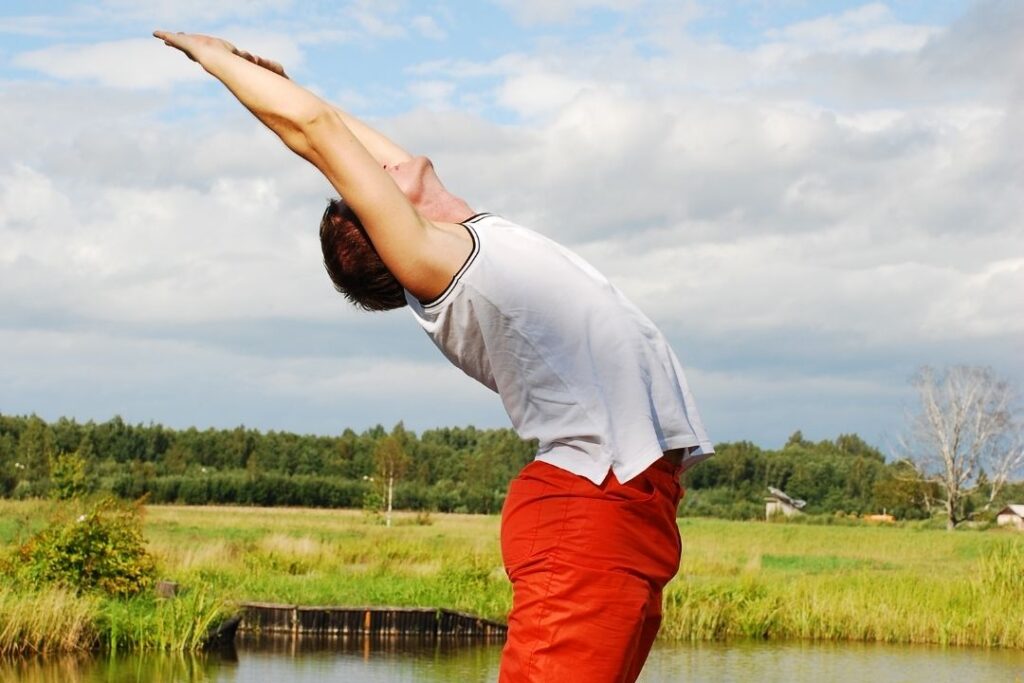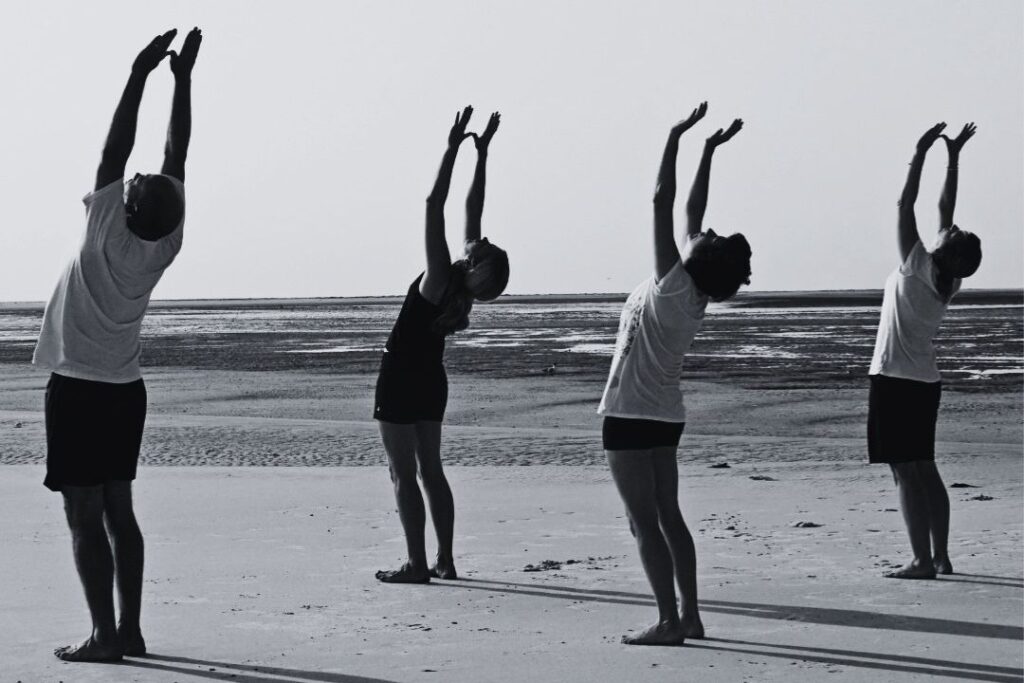
What is Hasta Uttanasana or Standing Back Bend?
Hasta Uttanasana, also known as Standing Back Bend or Raised Arms Pose, is a part of the Surya Namaskar Sequence. In fact, the 2nd and 11th pose in the Surya Namaskar Sequence is nothing but the Hasta Uttanasana pose.
This pose is generally practiced to open up the chest and, to allow deeper breaths and warm-up and strengthen the spine.

Hasta Uttanasana Meaning
| Sanskrit | Hasta Uttanasana |
| English | Standing Back Bend or Raised Arms Pose |
| Meaning | The name Hasta Uttanasana is a combination of four Sanskrit words, i.e., Hasta, Ut, Tan, and Asana |
| Hasta | Hand |
| Ut | Intense |
| Tan | Stretch |
| Asana | Posture |
Although we call it Standing Back Bend or Raised Arms Pose, the literal translation of Hasta Uttanasana in the English language is Hand Intense Stretch.
How to do Standing Back Bend?
- First, stand straight, and squeeze your legs together.
- Then, with an inhale, raise your hands overhead, keep your arms straight and palms facing forward.
- Keep shoulders length distance between both the arms and take few deep breaths.
- Finally, gently arch back by bending your head and trunk backwards. Keep length in your spine.
- Hold the pose for a moment, and then Lower your arms with an exhale.

Benefits of this pose
There are many claimed benefits of this Standing Back Bend. However, not all of them are scientifically proved. Hence, below is a list of a few scientifically proven benefits
- stretches and tones the abdomen muscles.
- opens the chest and facilitates deeper breaths.
- stretches and builds strength in the spine.
Precautions & Contraindications
Although yoga is for everyone, not all poses are for everyone. Different poses require a different level of fitness and experience.
Therefore, below are a few points to consider while doing Hasta Uttanasana.
- Practice this pose only on an empty stomach.
- Do not force your body too much.
- Avoid Standing Back Bend pose if you have neck, spinal, shoulder, or hip injury.
- If you are pregnant, practice it with extra care and under the supervision of an instructor.
- Do not practice this pose if you have high blood pressure.
Variations
If you find it difficult to practice this asana, or if it is too intense for you, you shouldn’t force yourself. Instead, you can practice some variant of the asana, which is more comfortable for you.
Similarly, if you feel this pose is too easy, you can also practice a variant of the Raised Arms Pose, which is slightly more intense.
You can find more on variations of Hasta Uttanasana on the article from adventureyogaonline.